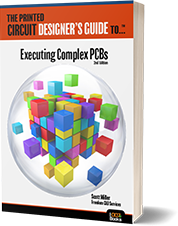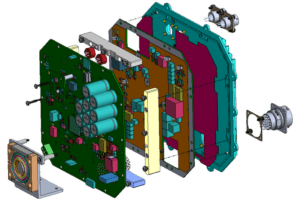Why ODB++ Should Replace Gerber Outputs on Your Next Project
ODB++ (Open DataBase++) is a proprietary, structured, hierarchical data format used in the Printed Circuit Board (PCB) industry for exchanging design and manufacturing data between different software tools and systems. It was developed by Valor Computerized Systems Ltd. and is now maintained by Mentor Graphics, a Siemens Business. The format is supported by leading tools such as Cadence’s Allegro, Altium, Mentor (Siemens) Xpedition, and PADS. In this article we discuss Odb++ vs Gerber and what our experts think you should use.
The Great Odb++ vs Gerber Debate
ODB++ is the preferred data output for manufacturers because it offers several advantages over other formats like Gerber and Excellon:
- Comprehensive data format: ODB++ is a single, unified data format that contains all the necessary information for design, fabrication, assembly, and testing of a PCB. This includes layer stack-up, component placement, routing, drill data, netlist, bill of materials (BOM), and more. This helps streamline the communication between design and manufacturing teams and reduces the likelihood of errors.
- Hierarchical structure: The hierarchical structure of ODB++ allows for efficient organization and management of complex PCB designs, making it easier for manufacturers to interpret and process the data.
- Better accuracy and integrity: ODB++ supports a higher degree of accuracy and data integrity compared to other formats like Gerber. This reduces the chances of errors during the manufacturing process and ensures a higher quality final product.
- Enhanced design for manufacturability (DFM): ODB++ allows manufacturers to perform more sophisticated DFM analysis, which helps identify potential manufacturing issues early in the design process. This can lead to improved yields and faster time-to-market.
- Easier data exchange: ODB++ is supported by a wide range of PCB design and manufacturing tools, making it easy for different teams to collaborate and exchange data seamlessly.
- Continuous development and support: The ODB++ format is actively maintained and updated to keep up with the latest technological advancements and industry requirements.
These advantages make ODB++ a preferred choice for PCB manufacturers, as it helps them reduce manufacturing errors, reduce costs, and increase efficiency throughout the PCB production process. By using ODB++, manufacturers can better understand design intent, minimize the need for manual intervention, and improve overall communication between the design and manufacturing teams.
The widespread adoption of ODB++ by major PCB design software vendors and manufacturing service providers has further solidified its position as the preferred data output format in the industry. This widespread support ensures that most parties involved in the PCB design and manufacturing process can work with the ODB++ format, making it a reliable and robust choice for exchanging design data.
In addition to the advantages of ODB++ in PCB design and manufacturing, it also provides significant benefits for the PCB assembly process. These benefits mainly stem from the format’s ability to convey comprehensive information about components, their placement, and their connections, which is crucial for efficient and accurate assembly.
- Component placement data: ODB++ provides detailed component placement information, including the exact location, orientation, and reference designators for each component. This allows assembly machines to accurately place components on the PCB, reducing errors and improving the overall assembly process efficiency.
- Bill of materials (BOM) integration: The ODB++ format includes a complete BOM that lists all the components required for the assembly, along with their descriptions, quantities, and manufacturer part numbers. This integrated BOM simplifies component procurement and helps ensure that the correct components are used in the assembly process.
- Netlist information: ODB++ includes the complete netlist, which defines the electrical connections between components. This information is essential for performing electrical testing after assembly, helping to identify and correct any issues with component connections or soldering.
- Assembly instructions: The ODB++ format can include assembly instructions, such as special handling requirements or soldering guidelines for specific components. This information can help reduce assembly errors and ensure that components are installed according to the design intent.
- Improved collaboration: ODB++ streamlines communication between the PCB design, manufacturing, and assembly teams, as all the necessary data is available in a single, unified format. This facilitates better collaboration and understanding among the teams, leading to more efficient assembly processes and higher quality products.
- Design for assembly (DFA) analysis: The comprehensive data available in ODB++ enables advanced DFA analysis, which helps identify potential assembly issues early in the design process. This can lead to improved assembly yields, reduced rework, and faster time-to-market.
By providing all the necessary information for PCB assembly in a single, unified format, ODB++ significantly improves the efficiency and accuracy of the assembly process. The ability to perform advanced DFA analysis, combined with better communication and collaboration among the design, manufacturing, and assembly teams, ultimately results in higher quality products and faster time-to-market.
The ODB++ format’s comprehensive data representation, hierarchical structure, accuracy, design for manufacturability capabilities, ease of data exchange, and active development make it the preferred choice for PCB manufacturers. By utilizing ODB++, manufacturers can optimize their processes, reduce the chances of errors, and ultimately produce higher quality products with increased efficiency.
Check out last week’s article: The Top 5 Reasons to Outsource Your Electronic Product Development




what about the vendor having your proprietary information.?
sure…would live to output 1 file and send it to a vendor. Yet all the vendors I work with still want Gerbers,drill data and a net list. Maybe the vendors
have to force the change.
We provide ODB++ to all of our vendors, it’s what they prefer to receive from us (obviously this can very across vendors, but the ones we tend to use prefer ODB++). I think we have only run into one instance of a vendor that preferred to use gerbers. As for proprietary information, it’s not the same as providing them the BRD file/CAD Database, it’s just a more intelligent data format that gives them everything they need in one go with less chance of errors.